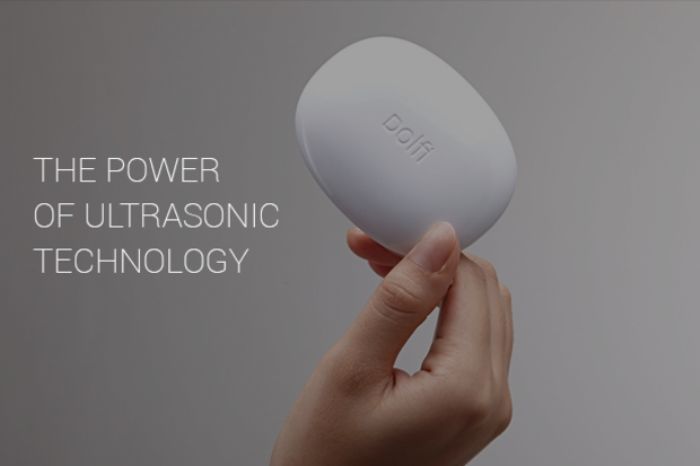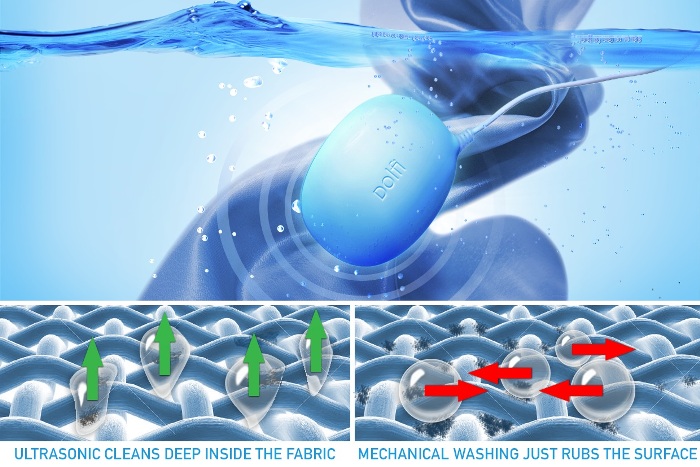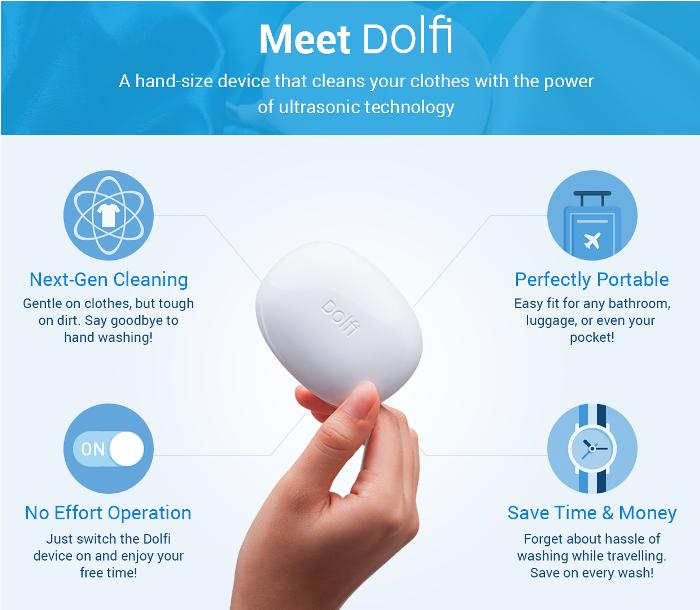Dolfi: Reinventing the Washing Machine with Ultrasonic Cleaning Technology
There’s a new kitchen gadget that seeks to make the cleaning of clothes faster, easier, and hi-tech. Referred to as Dolfi, this cleaning device employs ultrasound cleaning technology to blast away unwanted particles on clothes in less than thirty minutes. .
This technology may not necessarily replace the convenience offered by the traditional washing machine but it can become an excellent supplementary clothes cleaning equipment. Dolfi is a small (82mm x 64mm x 30 mm) and light (~300g) gadget capable of projecting ultrasonic waves to remove dirt from clothes. It’s so small that it can be easily grasped by one hand although using it does not involve the use of the hand.
What’s in the Name?
The name Dolfi, according to the device’s makers, is a tribute to dolphins, the most advanced users of ultrasound. A portion of the of the campaign funds for the Dolfi project (on Indiegogo) will be allocated for dolphin research and welfare. As of the posting of this blog, the Dolfi fundraising campaign has already reached mover $212,000 or more than 200% of the target funding. There are still 20 days left before the Indiegogo crowdfunding campaign for Dolfi ends.
Using Dolfi
Using Dolfi is simple. Perhaps, even simpler than how a traditional washing machine is used. The steps are not that different from using typical washing machines or from handwashing. Water and laundry detergent will be needed (in amounts similar to traditional washing). The small Dolfi device is than dipped into the water. The blue LED indicator will illuminate once it starts operating. Washing (with the Dolfi device activated) takes around 30 to 40 minutes. Of course, rinsing will be needed after Dolfi is taken out of the water.
Dolfi cannot be used without water and is not designed to be used to target-clean specific parts of clothes. It needs to be dipped underwater for the ultrasound to cause minute but rapid disturbances in the liquid to enable the cleaning process. It works in the same way most other ultrasonic cleaning devices work. The difference, however is in the design. Designed to be used just like a teabag, it is small so it does not take a lot of space and is very portable. A basin, pale, or any other kind of large water container (along with water and detergent of course) will be enough to do laundry with Dolfi.
Dolfi need to be connected to AC power at 110/220V, 50-60 Hz. One Dolfi device is estimated to be capable of cleaning a laundry volume of up to 2 kg. This is around the same or slightly lower than the typical laundry volume handled by most household washing machines.
Advantages of Dolfi
Dolfi’s design and small size offer a lot of advantages. For one, as mentioned, it is very portable. It is a great travel, camping, or vacation companion. The size, however, belies its potential as an effective laundry cleaner. Although there haven’t been actual tests that compare its cleaning results to those of traditional washing machines, it is expected to be a highly capable cleaning device. Moreover, it requires very minimal amount of power to operate. According to its makers, it consumes up to 80x less energy compared to traditional washing machines.
Is Ultrasonic Cleaning Really Effective?
Ultrasonic cleaning may sound new but it actually isn’t. Ultrasound has been used in as number of industries for thorough but delicate cleaning tasks. It was already used in the industrial setting back in the early 1950’s. The cleaning mechanism back then isn’t that different from what is being employed at present. Ultrasonic cleaning makes use of cavitation bubbles induced by sound to create high frequency pressure waves that agitate the liquid. These pressure waves in the liquid are capable of removing traces of contamination such as rust, oil, pigments, grease, blood, lime scale, polishing compounds, fingerprints, soot wax, soil, and mold release agents.
It’s important to emphasize, however, that ultrasonic cleaning does not sterilize the objects being cleaned. The detergent or other cleaning solutions may be used to introduce sterilizing agents but the ultrasonic cleaning process cannot be expected to kill microbes, germs, bacteria, viruses, and microorganism contamination.
Availability
Dolfi is expected to be mass produced by July this year. Deliveries will start in August. Since the crowdfunding target has already been achieved (even exceeded), Dolfi will likely become available to prospective buyers at least in the United States soon. The estimated retail price is at least $109 but it can be obtained for only $99 for “early bird” buyers for a limited number of units.


